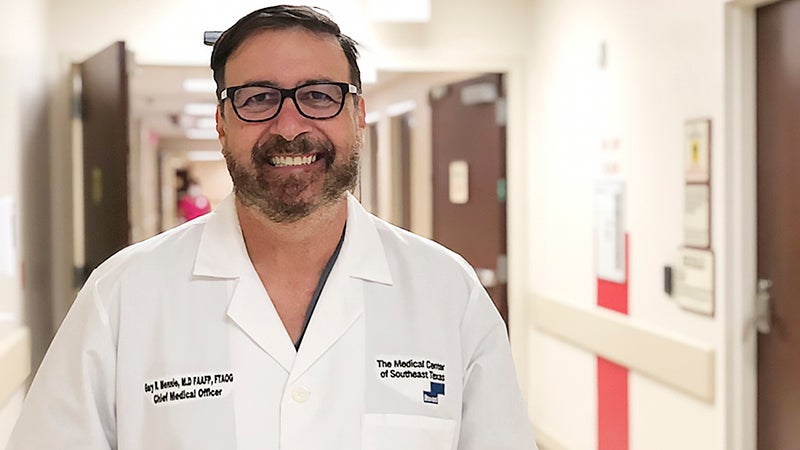1ST RESPONDERS — Medical Center of Southeast Texas learning COVID lessons, ready for flu season
Published 12:35 am Saturday, September 26, 2020

- Dr. Gary Mennie is CMO of The Medical Center of Southeast Texas.
|
Getting your Trinity Audio player ready...
|
Those in the medical field have learned some lessons since the initial spread of COVID-19 in March.
Simply put, the measures put in place to stop the spread of the illness are working — wearing a mask, social distancing, staying away from large crowds, hand washing and disinfecting counters.
Dr. Gary Mennie, CMO of The Medical Center of Southeast Texas, said the fact there has not been huge breakouts of COVID in the population or at schools is because the precautions work.
Treatment of COVID has not changed much based on the severity of the illness, from treating it as the flu for mild cases to hospitalization for more severe cases. Some patients are treated with steroids, and Mennie has seen some places treating patients with azithromycin.
Physicians in the hospital have learned a lot in the months since COVID began to spread.
Treatments are better, and they have learned how to better care for patients on ventilators and more.
Treating with convalescent plasma, which is being researched, will likely be offered at the hospital soon. LifeShare Blood Center, which provides blood supplies to most hospitals in the area, are now able to process the plasma, Mennie said.
Physicians have also learned that if you have other conditions that impact your immune system such as lung illnesses, heart disease and diabetes you are more susceptible to contracting COVID, he added. And data shows being obese makes a person at greater risk as well.
Is it COVID or the flu?
With flu season approaching comes the question “is it COVID or the flu?”
The big challenge, Mennie said, is the symptoms are pretty much the same for the flu and COVID.
“The big take-home, I think, is you need to get the flu vaccine,” Mennie said. “You can be co-infected and have the flu and COVID. Obviously, if you have both COVID and influenza, it’s a much worse case scenario for you as a patient. The big push is that people should be getting vaccinated for the flu. Their kids need to be vaccinated for the flu.”
The precautions for the flu and COVID are the same — frequent hand washing, masks, social distancing, disinfecting.
The Medical Center is set up to test for the flu and COVID.
“If you are in the hospital or the ER, you are going to be tested for influenza A and B and COVID because these things can coexist,” he said.
Mennie believes, in general, the U.S. will see another round of COVID at the end of the year. He based this on reports of the spread in other countries.
Last words
Getting the flu vaccine and taking proper precautions is the key in this situation.
Some people may shy away from getting the flu vaccine, saying in the past they got the shot and got the flu as well.
“It doesn’t mean you are not going to get the flu,” Mennie said, adding the person may have already been infected when receiving the shot. “Had I not got the flu shot, how much worse would the symptoms be? Being vaccinated sometimes reduces the severity and length if you do get infected. It will be a much milder course and much shorter course.”





